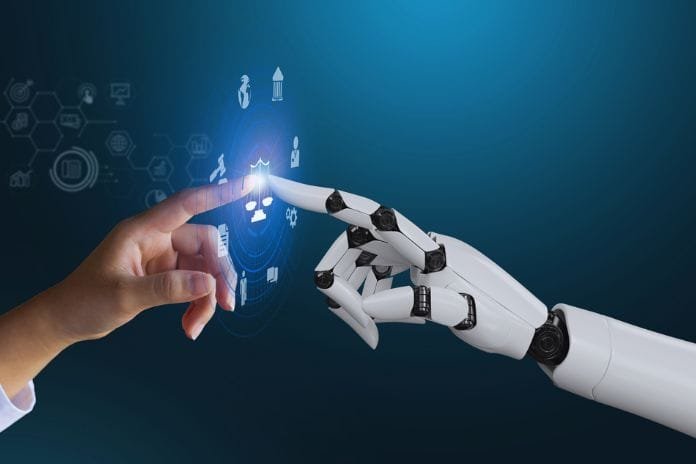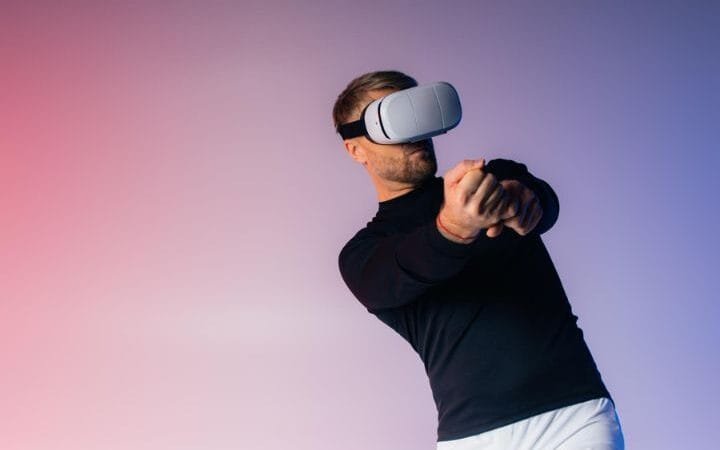Man Vs Machine: Does Artificial Intelligence Knock Us Out?

The Areas Where The Machine Rivals, Even Surpasses the Man
Man Vs machine has become an important discussion now a days. Here are the situations where you need to know.
The Machine That Calculates Faster Than Its Shadow
At the moment, artificial intelligence does not equal human intelligence. On the other hand, it imitates its logic and operation, adding an incomparable data storage capacity and processing speed. AI, therefore, takes advantage of humans in many areas, such as calculation. Man cannot compete with the mental arithmetic capacity of machines.
Memory: Who Is The Strongest At Memory Games?
Our brain’s storage capacity is limited, even if the Californian Salk Institute recently proved that our brain has storage capacities ten times greater than previous estimates. It could, in fact, store 1 petabyte of data. This is equivalent to that of the Web. But that’s nothing compared to what artificial intelligence can store. For example, Google, Facebook, Amazon and Microsoft would store 1,200 petabytes of data.
Vision: AI Dazzles Us… Or Almost
Man has sensory intelligence thanks to the multitude of sensors he possesses. Even if artificial intelligence does not yet perfectly equal human visual acuity, it still manages to distinguish objects and faces on an image thanks to sensors and cameras. An autonomous car has, for example, a 360° field of vision and can anticipate movements and obstacles.
However, artificial vision is not yet fully developed. Facial recognition can indeed be discriminating. The vision of artificial intelligence is distorted by the existence of algorithmic biases relating to the gender or appearance of individuals. These biases are, in fact, data biases, and they come directly from the data that humans have used to power machine learning.
When Google Photos or Flickr detected gorillas, animals or monkeys instead of black men and women, this data bias was attributed to the man himself. The designers of these algorithms create these biases by feeding the database with an overrepresentation of white men. The algorithm, which shapes and trains itself from this uneven base, then errs when recognizing women or people of black color. There is, quite simply, a lack of data.
Chess, Go Game Or Even Poker: Man Is No Longer The Master Of Games
In the 1950s, the mathematician Alan Turing imagined artificial intelligence by wondering if a machine could think like humans. The men then confronted the Machine during games of Backgammon, Othello, Connect Four or even checkers… the machines were put to the test. Among the best-known attempts is the Deep Blue machine chess duel against world chess champion Garry Kasparov.
If very good chess players had already measured themselves against computers as early as the 1960s, this 1997 match went down in history. A machine had beaten the best chess player in the world. Since then, artificial intelligence has been improved, and it can now beat humans, not only in board games but also in games where natural language or emotions come into play. In 2011, IBM’s artificial intelligence, Watson, beat all Jeopardy contestants! , an American game show.
Then it’s Google’s AI, AlphaGo, which in 2015 and 2016 beat the champions of Go, a game much more complex than chess. Recently, artificial intelligence has taken a new step by beating a human in poker. Artificial intelligence takes over man by mastering such a game with incomplete and imperfect information. But can it do so in all areas? Can the Machine systematically replace man?
These Areas Where The Machine Does Not Yet Exceed The Man
Artificial intelligence is increasingly interfering in our daily lives to assist us in our simplest gestures. But it cannot completely replace us, at least not now.
Driving: Who Is The Driver?
Artificial intelligence has invested heavily in our vehicles, which are becoming intelligent, connected and even autonomous. If the car can make it easier for us when we want to park, it is not yet completely autonomous, thanks to Park Assist. Some manufacturers, including Mercedes, BMW and Audi, have entered the race for autonomy, but Tesla has taken a step ahead with its Autopilot. However, the fatal accidents that occurred in 2016 with a Tesla and in 2018 with Uber remind us that a driver’s intervention is essential.
Translation: Google Translate Better Watch Out
Even if artificial intelligence has made great progress in automatic translation, it does not yet exceed the skills of human translators in the exercise of translation. The AI can translate a multitude of words and phrases in a large number of languages thanks to a gigantic database. On the other hand, AI does not yet have the full capacity to translate more substantial content or an isolated sentence considering the context or even to capture all the subtleties of a language: humor, innuendo, complex sentences, colorful languages (Asian languages).
In addition to cultural biases, AI is faced with a lack of training data in certain languages, the rarest languages. Nevertheless, progress has been made in this area thanks to deep learning and artificial neural networks, which Google calls Google Neural Machine Translate (GNMT).
Emotion Detection: Show Me Your Face, And I’ll Tell You How You Feel
Thanks to sensors, the Machine can detect the external appearances of our emotions, which can be read on our faces. On the other hand, these sensors cannot understand the origin of these emotions.
These Areas Where The Machine Is Not About To Overtake The Man
Where the Machine makes many advances to try to match or surpass human capabilities, it can compete with man. But there are still many areas where the Machine lags far behind man’s capabilities.
Mastery Of Language: Do You Speak Human?
Mastering language is not just about speaking a language but also about recognizing speech, understanding its meaning, and interpreting and relaying language. Language is a highly developed field of AI application. Language processing covers many application areas, such as speech recognition, chatbots, translation, voice agents etc. While the progress in these areas is notable, there is still room for improvement.
If we take the example of chatbots, these conversational agents capable of interacting with humans, we are still far from the perfect chatbot. At the moment, most chatbots answer predefined questions by following dialogue patterns. They are not yet quite capable of answering open-ended questions.
To be completely successful, chatbots should fool us into open conversations. It is besides the famous test of Turing, which determines if one converses with a computer or with a human. If, in 2014, the chatbot Eugene Goostman had passed this test, this success remains nevertheless contested, as well as the test itself.
Generalist Reasoning: Getting The Better Of Your Opponent
Rational reasoning is characteristic of a man endowed with conscience and intelligence. In the Machine, the reasoning would come under a strong artificial intelligence (Artificial General Intelligence) that does not currently exist.
Physical Agility: Whoever Wants To Is Not Agile
Some robots manage to move brilliantly, but this physical agility does not equal that of humans. We have, in fact, in our brains four times more neurons that manage movement than neurons that manage reasoning. Similarly, Olivier Ezratty adds that a man has less than 700 muscles, while a robot works with 20 to 30 motors at most. The robot is not yet nearly replacing us in areas that require a lot of talent in places unknown to the robot, except robots on assembly lines.
The Energy Balance: Flat Battery?
Robots and computers need electricity and batteries to function. The energy density of batteries is very low; that is to say, they cannot store much energy compared to humans. Fat, proteins or carbohydrates have a much higher energy density than a battery, which allows humans to be independent for longer.
Some areas will be developed much faster than others. Different factors come into play, such as economic or ethical obstacles. Anyway, the confrontation between men and machines has only just begun. And the debate will continue around the duality and complementarity between them.
Read Also: The Corporate Social Network, A Powerful Collaborative Space


